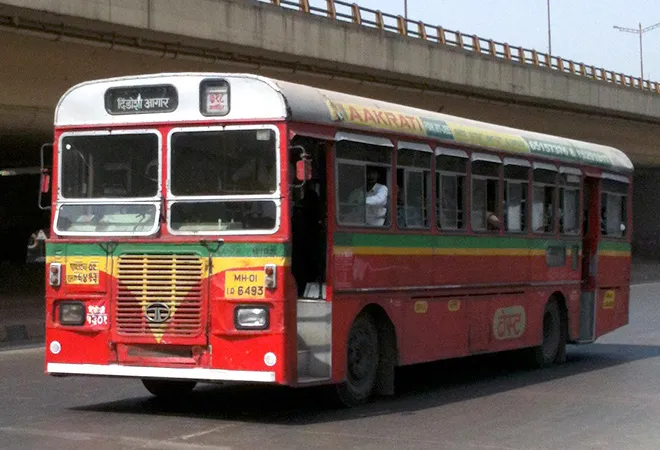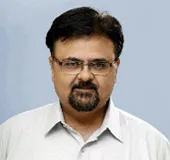-
CENTRES
Progammes & Centres
Location
With most of the grant money being used to settle loans and pay salaries, populist moves ahead of the state election may prove to be counterproductive for Mumbai’s public transport service.

With an eye on the upcoming Maharashtra Legislative Assembly polls, the Municipal Corporation of Greater Mumbai (MCGM), in a usual pre-election rush, recently scrambled to approve 140 public works to the tune of ₹05 billion. The hasty decision, taken by the civic standing committee in the Shiv Sena-ruled corporation, predictably came under criticism from the opposition parties. The leader of the opposition in the 227-strong house, blamed the ruling dispensation of subverting the democratic process by “curtailing discussions” on issues of such importance to the city. While most of the money was sanctioned for public infrastructure works such as road repairs, more than 72 percent of the quantum i.e. ₹4 billion was earmarked for the beleaguered BEST public transport services in the city.
This decision was closely followed by another announcement of salary hike and Diwali bonus for a section of BEST workers, mainly affiliated to the Shiv Sena and BJP-led employees’ unions. At a time when the Municipal Corporation of Greater Mumbai (MCGM) — BEST’s parent organisation—is desperately attempting to salvage the loss-making undertaking from impending financial doom, such populism may come at a heavy cost for Mumbai’s nearly 30 million people who rely on city buses as a crucial mode of local transportation.
The salary hike, slated to be ₹ 5,000 to ₹ 10,000 per month per employee, will benefit only around 10,000 employees of the 40,000-strong total workforce. It will cost the BEST coffers as much as ₹ 1.18 billion over the next five years. The BEST Workers’ Union is unhappy with such blatant favouritism. It has once again threatened an indefinite strike from 9 October, as the salary hike does not benefit the entire workforce. The BEST management, on the other hand, has expressed its willingness to extend the fare hike across the board, on the condition that all the employees sign an MoU on the same terms and conditions that have been agreed with the workers representing the Sena and BJP unions. If this happens, the financial burden on the undertaking will easily grow four-fold, to more than ₹ 4 billion over the next five-year period.
The BEST Workers’ Union is unhappy with such blatant favouritism. It has once again threatened an indefinite strike from 9 October, as the salary hike does not benefit the entire workforce.
Such arm-twisting by the workers’ unions, and politicians pandering to them for political gains—besides a range of other management misdemeanours—has been a bane for the BEST, which, till recently, was in the grip of severe financial distress. The situation had steadily worsened since 2003, following the discontinuance of cross-subsidy from the earnings of the undertaking’s electric supply division. Losses of ₹ 23.5 million per day had forced BEST to reduce its fleet of buses, which dropped by 21 percent from 4,200 to 3,300 buses between 2013 and 2018. Over the same period, 18 percent of the bus routes were scrapped owing to poor occupancy of less than 30 percent. Eventually, BEST was struggling to meet the depleted demand, with just 3,201 buses at its disposal. This included 2,621 single-deckers, 429 midi buses, six electric buses, 25 AC buses and 120 double-deckers. Of these, 1,847 are CNG buses, 1,348 run on diesel, and six are electric buses. These buses plied on 410 routes: 361 of them within Mumbai city limits, 22 operated in Navi Mumbai, 14 in Thane and 13 in Mira-Bhayandar municipal areas.
As of January 2018, the total number of daily commuters fell from 3 million to 1.93 million in mid-2017. The earnings from ticket sales reduced by INR 1.30 billion from INR 11.81 billion in 2016-17 to INR 10.51 billion in 2017-18—a drop of nearly ₹ 110 million per month. Due to ongoing work for the metro lines, the worsening traffic congestion has also increased travel time. The average peak-hour speed of BEST buses has reduced by nearly half in a decade, from 16 kmph in 2008 to 9 kmph in 2018.
Beginning May 2019, the MCGM decided to take some firm steps to salvage the latter’s transport operations. While considering the merger of the annual budget of BEST with that of MCGM, the country’s richest municipal body, the MCGM also announced a monthly infusion of funds to the tune of ₹ 1 billion to BEST’s coffers. This was followed up by targeted measures to increase ridership. On 6 July 2019, the MCGM announced the introduction of a revised fare structure. The minimum fare was reduced from ₹ 8 for a distance of 2 km to ₹ 5 for travel of up to 5 km. The idea was to wean away the ridership that the BEST had lost within the critical radius of 5 km—particularly from suburban railway stations to offices and homes—to shared autos and cabs. Fares for longer rides were also slashed: from Rs. 13 to Rs. 10 for 5-10 km, from Rs. 19 to 15 for 10-15 km and from Rs. 25 to Rs. 20 for a distance more than 15 km. The reduced fares had an immediate impact. Bus ridership jumped by half a million after only one day. In the next 10 days, the daily ticket sales increased by 47 percent, from the pre-6 July mark of 1.7 million to 2.5 million tickets on 15 July. This trend has continued and BEST ridership—as on 18 September 2019— crossed the three million mark, registering 65 percent increase since the pre-fare reduction days.
While considering the merger of the annual budget of BEST with that of MCGM, the country’s richest municipal body, the MCGM also announced a monthly infusion of funds to the tune of ₹ 1 billion to BEST’s coffers.
This fare restructuring was supplemented with a renewed focus on bus fleet augmentation. BEST approved the procurement of 1,250 new buses through the wet-lease mode in mid-June. Work orders for the procurement of 450 AC, non-AC mini and midi buses and 80 electric-powered buses were issued in August. The Centre will provide 60 percent of the cost incurred for the electric buses. In addition to these 1,250 buses, the Shiv Sena has proposed the purchase of an additional 1,000 buses (500 each of AC-midi CNG and AC-mini diesel) at a cost of Rs. 26.22 billion.
The BEST, in a prudent decision, has considered the procurement of all new buses through the wet lease model, an adaptation of the international best practices prevalent in London and South Korea. In the wet leasing arrangement reportedly adopted by the BEST, the bus drivers will be provided by the company to whom the contract is awarded, while the conductor will be from the BEST. For the proposal moved by the Shiv Sena for the procurement of additional 1,000 buses, the driver is expected to also double up as the conductor, negating the need for any BEST employee to ride on these buses. Thus, the BEST would be better equipped to offer lower fares and yet increase both its ridership as well as its bus fleet. Procuring buses that run on cleaner and greener fuels and electric power through the wet lease model is expected to cut BEST’s operational costs by nearly 20 percent. These proposals will follow the core principle that public transport can outdo all other modes of private transport if it is made affordable and offered with the adequate number and size of buses to suit the demand as well as the road conditions.
However, it is to be noted that globally, public transport systems are able to provide optimum services only if they breakeven. The unprecedented steps taken in the past four months seems to have put BEST firmly on the path to financial recovery, but questions remain. A substantial chunk of the total grant of ₹ 9.16 billion received up to August 2019 has been spent only on the repayment of outstanding loans and to bridge the shortfall in BEST’s salary account. Given this scenario, any haphazard populist measures to pander the unions will hurt the long-term interests of the BEST as well as the employees. Worst of all, with a section of the employees continuing to remain dissatisfied, any strike will hurt the fast-rising ridership of the BEST.
The views expressed above belong to the author(s). ORF research and analyses now available on Telegram! Click here to access our curated content — blogs, longforms and interviews.

Dhaval is Senior Fellow and Vice President at Observer Research Foundation, Mumbai. His spectrum of work covers diverse topics ranging from urban renewal to international ...
Read More +